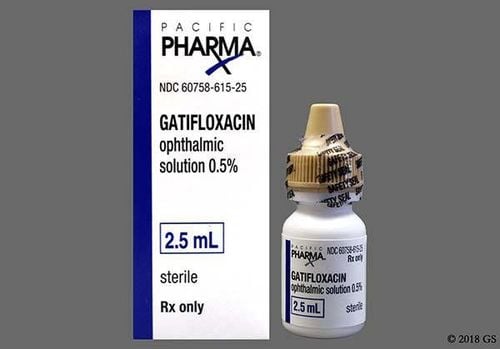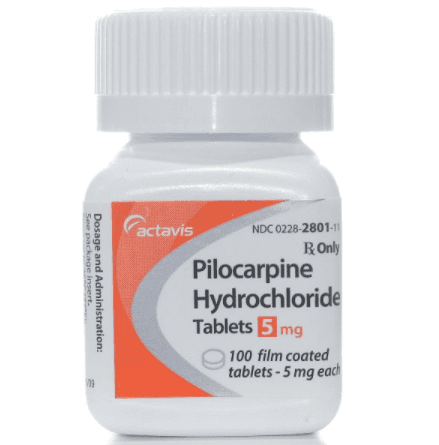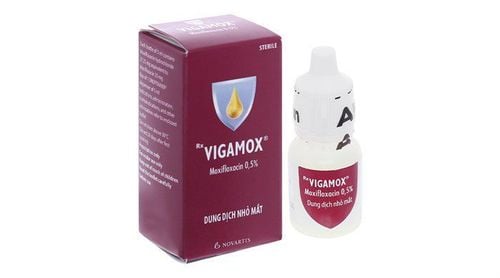This is an automatically translated article.
Cortisporin is an ophthalmic ointment indicated for the treatment of aseptic inflammatory diseases of the eye. So the use of Cortisporin and how to use it? Please read the following article.
1. What is Cortissporin?
Cortissporin has the main ingredients are Hydrocortisone, Neomycin and some components polymyxin B sulfate, zinc bacitracin. Hydrocortisone ingredient has anti-inflammatory effect, slows down wound healing. Since steroids can inhibit the body's defenses against infection, the concurrent use of the antibacterial ingredient, Neomycin, can increase the effectiveness of the treatment. Cortisporin ophthalmic ointment is antibacterial and sensitive against strains of Staphylococcus aureus, streptococcus including Streptococcus pneumoniae, Escherichia coli, Haemophilus influenzae, Klebsiella/Enterobacter species, Neisseria and Pseudomonas aeruginosa.
2. Indications of the drug Cortissporin
Cases of inflammation in the eye area with infection or at risk of infection. Conjunctivitis, keratitis, uveitis, corneal damage caused by chemicals, radiation, thermal burns or foreign bodies.
3. Contraindications of Cortissporin
Do not use Cortisporin in patients who are allergic to steroids, Neomycin or any other ingredient of the drug. Viral conjunctivitis and keratitis, such as herpes simplex keratitis, recent varicella vaccination, ocular Mycobacterium infections and other fungal diseases.
4. Notes when using Cortissporin
Cortisporin ointment may slow the healing of corneal wounds. Prolonged use of the drug can lead to glaucoma, optic nerve damage, visual disturbances, visual field, cataracts due to the corticosteroid component of the drug. Increased risk of eye infections secondary to long-term use. In diseases that cause thinning of the cornea or sclera, perforation and ulceration of the cornea may occur. When purulent infection is present in the eye, corticosteroids may mask signs of infection or enhance an existing infection. Dosage, administration, and glaucoma side effects should be considered in patients using the drug for more than 10 days. Use of corticosteroids after cataract surgery may slow healing and increase the rate of membrane detachment. Neomycin sulfate component of the drug can cause skin sensitization when used. There is not enough evidence to ensure the safety of Cortisporin for the fetus and child, so pregnant and lactating women need to weigh the benefits when using the drug.
5. Cortissporin drug interactions
Cross-reactivity may occur when Kanamycin, Paromomycin, Streptomycin, Gentamicin are used together with Cortisporin.
6. Dosage and how to use Cortissporin
How to use:
Cortisporin is in the form of eye drops. Use the medicine to avoid direct contact with the tip of the vial to the eyelids or any other surface. Do not use the same vial on multiple patients because of the increased risk of infection. Dosage:
Apply ointment to the affected eye every 3-4 hours, depending on the severity and condition of the disease. Do not use more than 8 grams and do not use the old dose of Cortisporin when the patient does not respond to treatment.
7. Cortissporin side effects
Some unwanted effects may be encountered when using Cortisporin:
Vision disturbances, loss of vision. Risk of secondary infection, slow wound healing. Allergic reactions, rash. Itching, swelling, redness of the conjunctiva. Glaucoma, optic nerve damage. Cataract. Some studies on laboratory animals, long-term use may cause cancer or cause gene mutations, but no side effects have been detected in humans. Thus, Cortisporin is an eye ointment indicated in the pathologies of ophthalmology. Cortisporin combines the effect of steroids and the antibiotic Neomycin, so in addition to the therapeutic effect of the drug, it also causes many unwanted reactions to the body. Therefore, patients need to strictly follow the instructions from the doctor / pharmacist, do not arbitrarily buy Cortisporin for home treatment.













